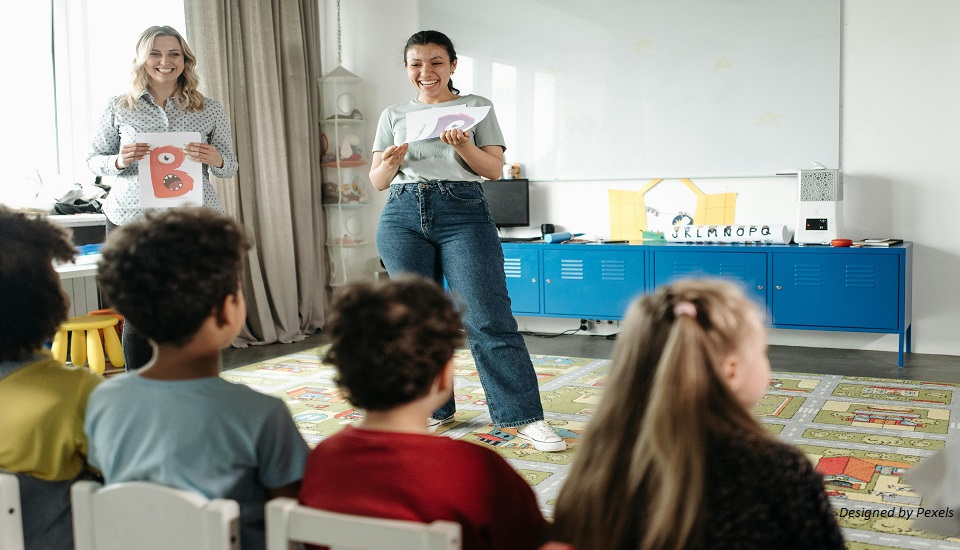
10 Ways To Cultivate Curiosity In A Classroom
13th February 2025
The world is evolving at an unprecedented pace, and education must keep up with this rapid change. Traditional teaching methods, which prioritize rote memorization and standardized testing, may no longer be sufficient to prepare students for the challenges and opportunities of the 21st century. Instead, fostering exploration and innovation in the classroom is essential to cultivating critical thinkers, problem solvers, and creative minds. This blog delves into the importance of exploration and innovation in education, the benefits it brings, and practical innovative teaching strategies teachers can implement to create a dynamic and engaging learning environment.
The Importance of Exploration and Innovation in Education
If you want to understand why you should be innovative in a classroom, here are a few reasons:
- Fostering Curiosity and Creativity
When students are encouraged to explore topics beyond their curriculum, they become naturally curious and engaged in their learning process. Creativity flourishes when students are given the freedom to think outside the box and experiment with new ideas.
Open-ended projects and inquiry-based learning help students generate innovative solutions and develop original ideas.
Do you follow us on Social Media? We regularly share upgraded educational content, tips, feedback, and more. Check us out by clicking the profiles here - Facebook / Twitter / LinkedIn / Pinterest / Instagram / YouTube
- Preparing Students for the Future
The job market is shifting towards industries that value adaptability, problem-solving, and innovation. Careers in STEM, entrepreneurship, and creative industries require a mindset that embraces continuous learning and experimentation.
Exploration in the classroom prepares students to navigate ambiguity and make informed decisions in real-world scenarios.
- Enhancing Problem-Solving Skills
Innovation thrives when students are challenged to think critically and solve complex problems. Rather than providing direct answers, teachers can pose thought-provoking questions that encourage students to investigate solutions.
Hands-on activities, simulations, and design thinking methodologies provide practical applications of problem-solving skills.
- Promoting Collaboration and Teamwork
Innovation often emerges from collaboration, where students work together, share ideas, and refine their understanding of concepts through discussions.
Group projects, brainstorming sessions, and peer feedback encourage students to learn from each other and develop interpersonal skills necessary for success.
- Building Resilience and Growth Mindset
Innovation requires trial and error, and students must understand that failure is a natural part of the learning process.
Encouraging a growth mindset helps students view setbacks as opportunities to improve rather than as barriers to success.
Strategies to Foster Exploration and Innovation in the Classroom
Here are a few strategies educators with Special Education Teacher Training can employ in their classrooms:
1. Create a Safe and Supportive Learning Environment
Students should feel comfortable expressing their ideas without fear of criticism or failure.
Teachers can encourage open discussions, validate diverse perspectives, and create a classroom culture that embraces experimentation.
2. Encourage Inquiry-Based Learning
Inquiry-based learning encourages students to ask questions, conduct research, and explore topics that interest them.
Teachers can facilitate learning by guiding students through the inquiry process rather than simply delivering information.
3. Incorporate Hands-On and Experiential Learning
Allowing students to engage in real-world applications of knowledge fosters deeper understanding and innovation.
Activities such as science experiments, coding projects, and business simulations help students apply their learning in meaningful ways.
4. Use Technology and Digital Tools
Integrating technology into the classroom can enhance exploration and innovation.
Online research, virtual reality, gamification, and educational apps offer interactive and immersive learning experiences.
5. Encourage Interdisciplinary Learning
Real-world problems often require knowledge from multiple disciplines. Teachers can integrate subjects like science, art, technology, and literature to provide a more holistic understanding of concepts.
STEAM (Science, Technology, Engineering, Arts, and Mathematics) education fosters interdisciplinary exploration.
6. Allow Student Choice and Autonomy
Giving students control over their learning fosters motivation and ownership.
Allowing students to choose their project topics, presentation styles, or research areas encourages independent thinking and creativity.
7. Facilitate Design Thinking and Problem-Based Learning
Design thinking is a structured approach to innovation that encourages students to identify problems, brainstorm solutions, and prototype their ideas.
Problem-based learning challenges students to solve real-world issues through research and collaboration.
8. Provide Opportunities for Reflection and Feedback
Reflection helps students assess their learning and find areas for improvement. Teachers can encourage self-reflection through journals, discussions, and portfolio assessments.
Constructive feedback from teachers and peers helps refine ideas and enhances critical thinking.
9. Connect Learning to the Real World
Making connections between classroom content and real-world applications increases engagement. Inviting guest speakers, organizing field trips, or engaging students in service-learning projects bridges the gap between theory and practice.
Encouraging students to explore local or global challenges promotes civic awareness and social responsibility.
10. Celebrate Innovation and Creativity
Recognizing students’ efforts and achievements fosters a culture of innovation. Showcasing student work through exhibitions, digital portfolios, or presentations builds confidence and inspires others to explore new ideas.
Encouraging participation in competitions and hackathons can motivate students to push their creative boundaries.
Bottom Line
Innovation and exploration are the cornerstones of an engaging and effective classroom. When teachers who have pursued a B.Ed. in Special Education embrace innovation in their teaching methods, they inspire students to take ownership of their learning, think critically, and develop the creative mindset needed to shape the future. In a world that constantly demands new solutions and fresh ideas, fostering exploration and innovation in the classroom is not just an option—it is a necessity.
We believe education should be accessible to everyone. That’s why we don’t charge for our blogs. Find the right course that will help you in your career with us, contact us at +6621056101. You can mail us at act@asiancollegeofteachers.com
Written By : Ruchi Mehta




